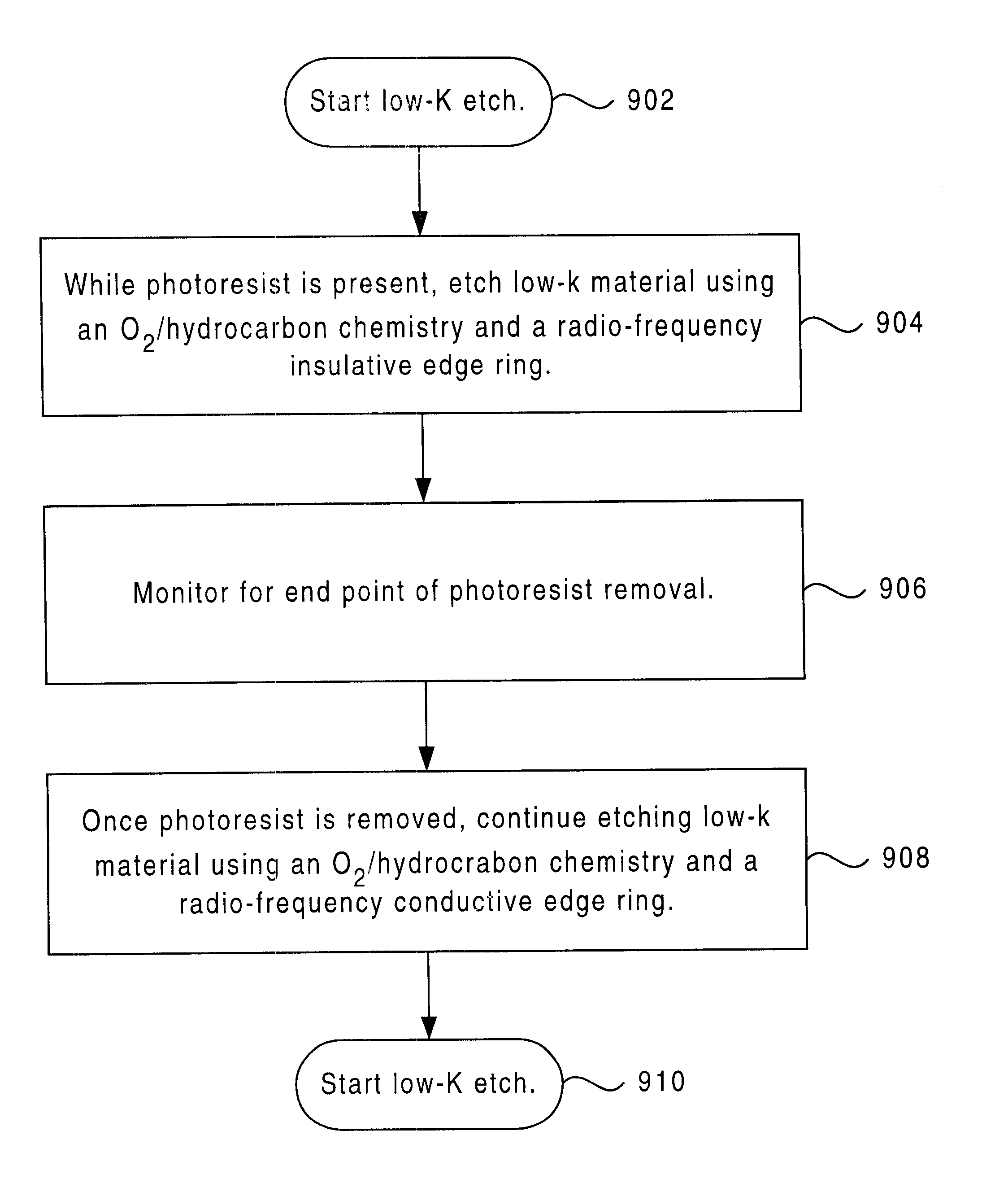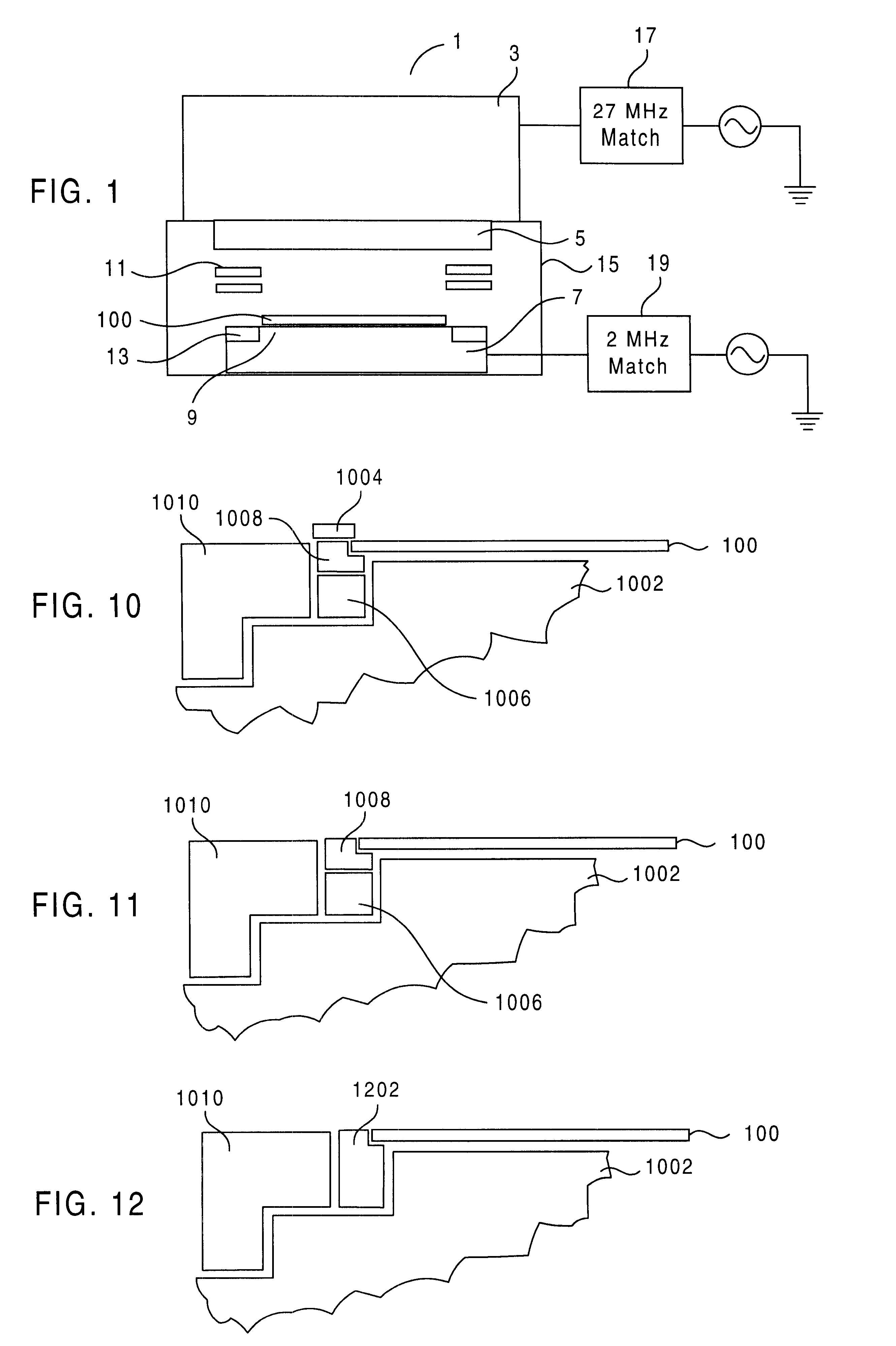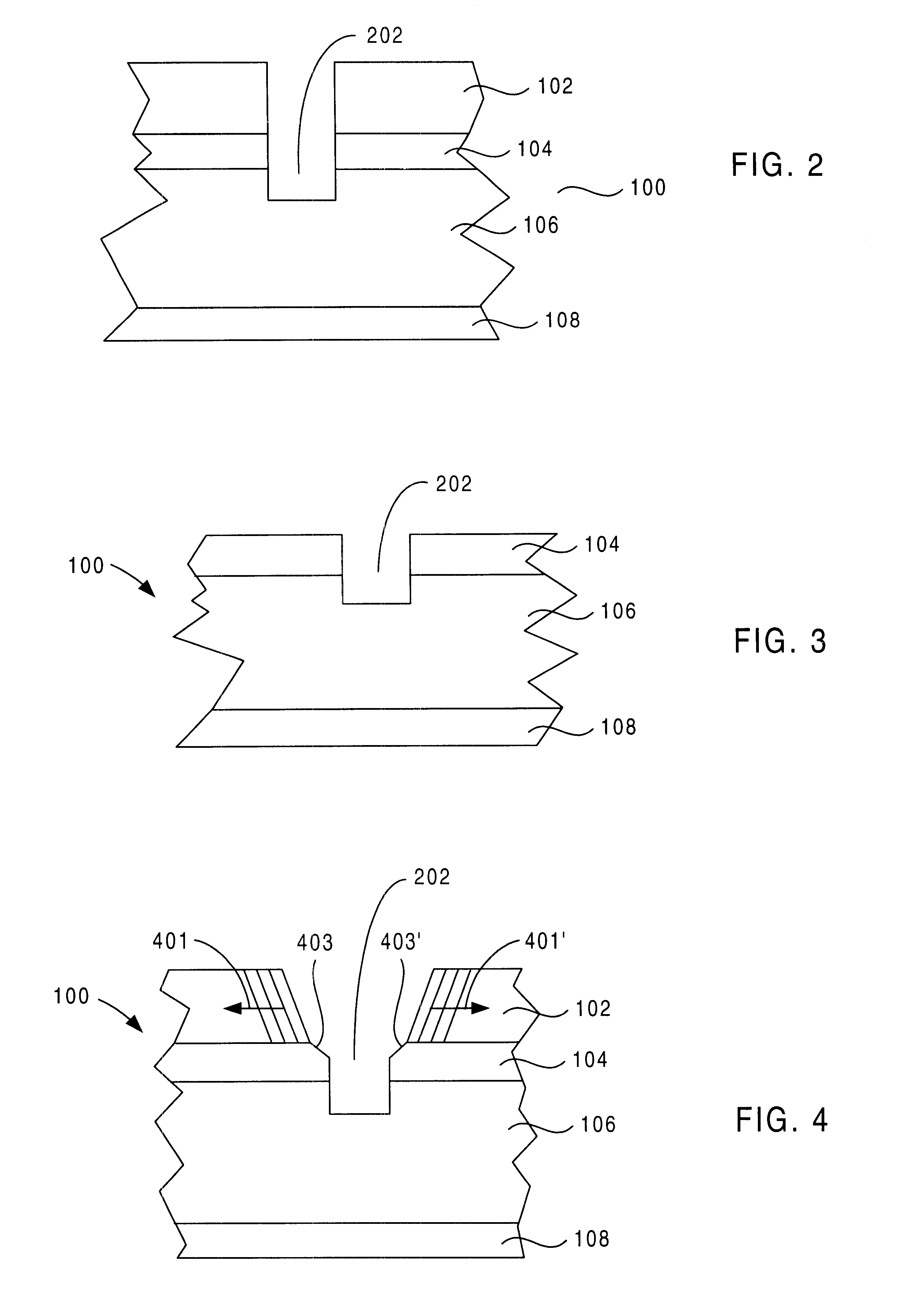Convertible hot edge ring to improve low-K dielectric etch
a dielectric etch and hot edge technology, applied in the manufacture of semiconductor/solid-state devices, basic electric elements, electric apparatus, etc., can solve the problems of slow operation of semiconductor devices, insufficient conductive line isolation, and sio dielectric layers formed in layers 2
- Summary
- Abstract
- Description
- Claims
- Application Information
AI Technical Summary
Benefits of technology
Problems solved by technology
Method used
Image
Examples
Embodiment Construction
and in conjunction with the following figures.
The present invention teaches a two-step process to improve low-K dielectric etch uniformity on a wafer bearing a low-K layer, a hard mask layer, and a photoresist layer. The etching process takes place in a reactor vessel. According to a first aspect of the present invention, in a first etching step while photoresist is present the low-K material is etched using a first etchant including an oxygen-bearing compound and a hydrocarbon passivant in the presence of a radio-frequency insulative edge ring. When the photoresist is determined to be substantially cleared from the wafer, for instance by means of a clearing signal generated by detectors and end-point software, a second etching step is performed. In the second etching step, the low-K material is etched using a second etchant including an oxygen-bearing compound and a hydrocarbon passivant in the presence of a radio-frequency conductive edge ring. Hydrocarbons may, in accordance with...
PUM
 Login to View More
Login to View More Abstract
Description
Claims
Application Information
 Login to View More
Login to View More - R&D
- Intellectual Property
- Life Sciences
- Materials
- Tech Scout
- Unparalleled Data Quality
- Higher Quality Content
- 60% Fewer Hallucinations
Browse by: Latest US Patents, China's latest patents, Technical Efficacy Thesaurus, Application Domain, Technology Topic, Popular Technical Reports.
© 2025 PatSnap. All rights reserved.Legal|Privacy policy|Modern Slavery Act Transparency Statement|Sitemap|About US| Contact US: help@patsnap.com



